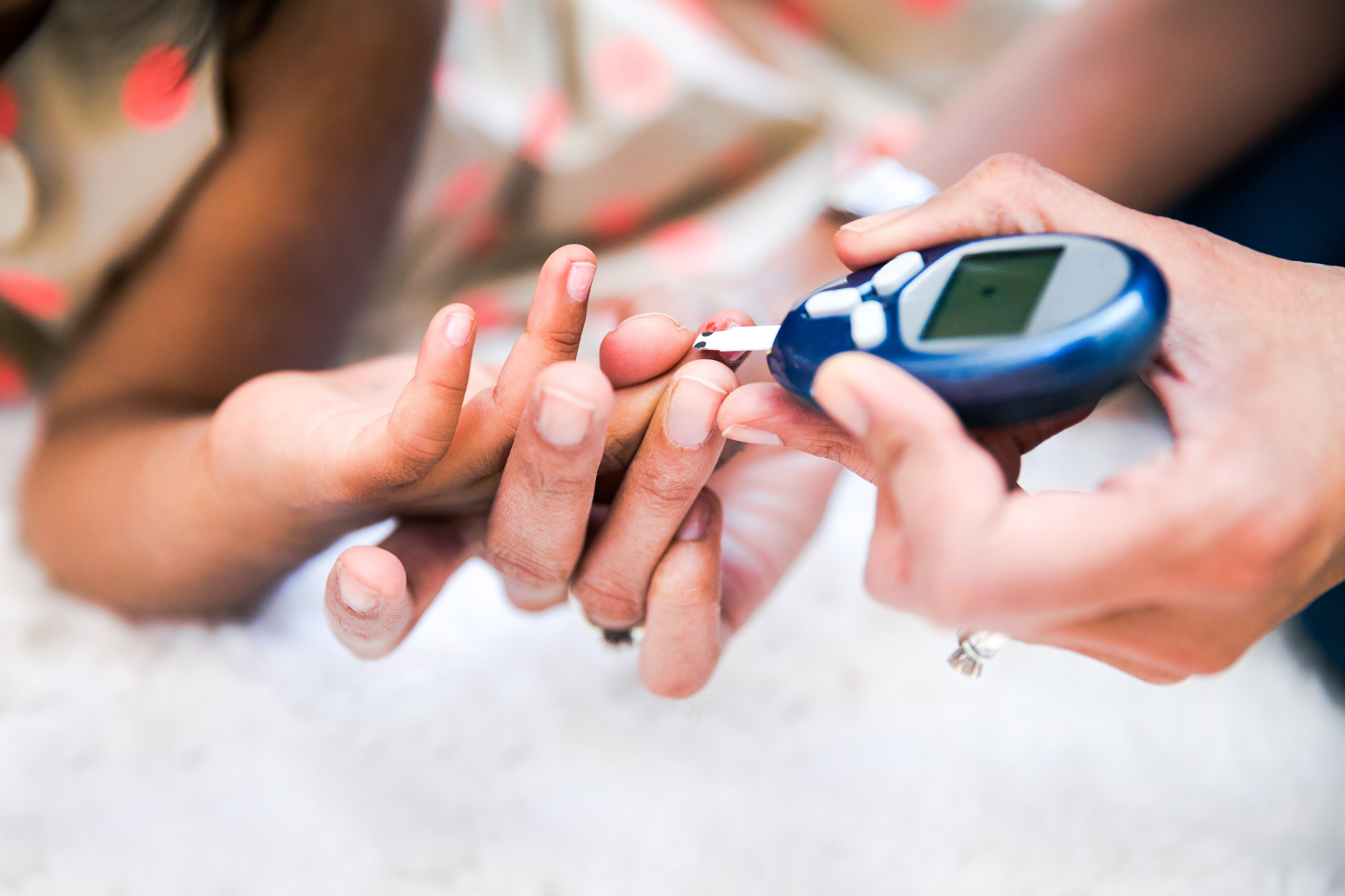Screening for risk factors and complications starts at diagnosis of diabetes. Even though complications rarely occur in children and in teenagers, screening is important because detecting complications at an early stage allows for actions to help slow their progression.
Screening for complications of type 1 diabetes
The diabetes team will recommend on a regular basis some of the following blood and urine tests, and examinations to:
- screen for complications
- monitor blood glucose (sugar) control
- monitor for conditions that occur more often in people with type 1 diabetes.
Your child’s health-care team will advise more frequent testing and interventions if they discover any problems.
| Screening for complications of type 1 diabetes | ||
|---|---|---|
| Complication | How do we screen for it? | How often? |
| Hypertension (high blood pressure) | Blood pressure | At least twice per year |
| Dyslipidemia (blood fat levels out of range) | Blood test | Screen at 12 and 17 years of age Children younger than 12 years of age with risk factors |
| Nephropathy (kidney damage) | Urine sample | Yearly screening starting at 12 years of age in those who have had type 1 diabetes longer than 5 years |
| Retinopathy (eye damage) | Eye check-up with an optometrist in your community to detect early diabetic retinopathy Diabetes eye exams should include a check of the retina. Eye drops are used to widen the pupils so that back of the eye can be seen |
Yearly screening starting at 15 years of age for teens who have had type 1 diabetes for longer than 5 years Screening can increase to once every 2 years for teens who have good glycemic control, have had type 1 diabetes for less than 10 years and did not have retinopathy at the iniitial eye assessment |
| Neuropathy (nerve damage) | Questions and physical examination | Yearly screening in adolescents post-puberty with poor control, who have had diabetes for longer than 5 years |
Screening for complications of type 2 diabetes
Because type 2 diabetes can go undetected for a long time, some of these complications may have started by the time of diagnosis. For this reason, the screening for complications in children with type 2 diabetes should start at diagnosis.
Your child’s health-care team will recommend some of the following blood and urine tests.
The health-care team will recommend more frequent testing and interventions if they discover any problems.
| Screening for complications of type 2 diabetes | ||
|---|---|---|
| Complication | How do we screen for it? | How often? |
| Hypertension (high blood pressure) | Blood pressure | At every diabetes visit after diagnosis (at least twice a year) |
| Dyslipidemia (blood fat levels out of range) | Fasting blood test | At diagnosis and every 1-3 years after |
| Nephropathy (kidney damage) | Urine test | Yearly screening starting at diagnosis |
| Retinopathy (eye damage) | Eye check-up with an optometrist in your community to detect early diabetic retinopathy Diabetes eye exams should include a check of the retina. Eye drops are used to widen the pupils so that back of the eye can be seen |
Yearly screening starting at diagnosis |
| Neuropathy (nerve damage) | Questions and physical examination | Yearly screening starting at diagnosis |
